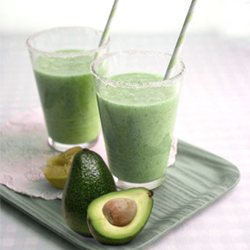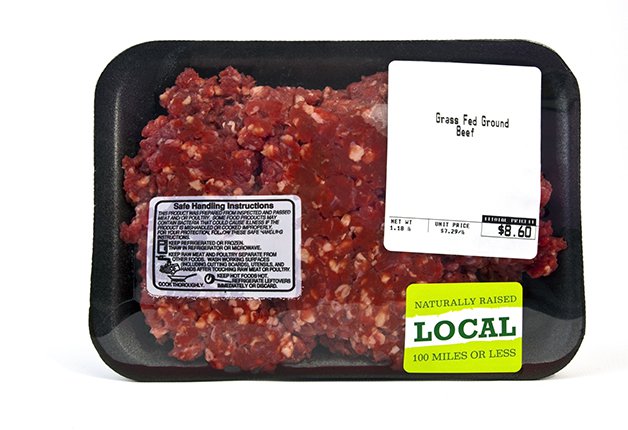How to Lose Thirty Pounds in Two Months
Weight loss can seem like a lofty goal, but you can realistically learn how to lose thirty pounds in two months by eating smart and adding exercise to your daily routine. To lose that kind of weight in the nine-week in time period will require having a plan and dedication, but you can meet that goal if you put your mind to it.
Steps
Part 1 Creating a Weight-Loss Plan
-
1
Know what you have in store. Starting off an article about weight-loss this way is hardly motivating, but it helps to cut to the chase: It's extremely difficult to lose 30 pounds in two months. Expert doctors and dietitians agree that losing 1 to 2 pounds per week is healthy.[1] Even if you lose 3 pounds per week for 9 weeks, you're still short of hitting your weight-loss goal. While it's certainly possible to lose 30 pounds in two months, whether or not it's healthy is another question.
- Healthy weight loss comes from trimming pounds off of fat reserves without triggering the starvation response. When you cut down your caloric intake so low that your body thinks you're starving, it actually begins shedding muscle instead of fat. This is not a healthy trend.
- It's hard to drop pounds simply by eating less, too which is unhealthy depending on what kind of food it is. Fat is needed, but it isn't healthy to overdose the amount. Protein is needed significantly for your health. They are used to make muscles,tendons, skin, and organ. When you cut your calories significantly, your body actually has a harder time shedding pounds. This phenomenon is called diet induced adaptive thermogenesis.[2] Perhaps it's a mechanism for survival, or perhaps it's a way for our bodies to maintain a comfortable body weight. Whatever it is — and as crazy as it sounds — you need to take in calories in order to lose weight.
-
2
Know how many burned calories it takes to lose weight. There are 3,500 calories in a pound. This means that you need to burn 3,500 more calories than you take in during the day in order to lose a pound of weight.[3] That's a lot of calories to burn.
- For reference, you can expect to burn between 100 and 125 calories running a mile at a semi-comfortable speed.[4] At that pace, it would take about 28 miles (45 km), or more than a marathon, in order to shed a single pound of weight.
- People who run marathons routinely lose 7 pounds during a typical race, but much of that loss (~6 lbs.) is water weight.[5][6]
- For reference, you can expect to burn between 100 and 125 calories running a mile at a semi-comfortable speed.[4] At that pace, it would take about 28 miles (45 km), or more than a marathon, in order to shed a single pound of weight.
- 3 Learn about other factors involved in losing weight. Luckily, humans can shed weight several different ways. There's muscle loss, fat loss, and water loss. Much of the weight you can expect to lose during your two months will come from water loss, and that's fine. If you combine a healthy lifestyle with regular exercise and a Spartan workout routine, you'll be able to achieve your goal.
-
4
Set weekly or monthly targets for yourself to keep you motivated. Many people start exercising and fail to see immediate results. When they're planning on shedding 15+ pounds, that sort of stalemate is incredibly discouraging: They soon give up because their goals are too lofty and their results are too few. Instead of falling victim to this dieter's dilemma, break down your goals into more manageable chunks so that if you fail to see immediate results, you don't get discouraged and quit.
- You want to lose 30 pounds in two months, so your mini goals are losing 15 pounds per month or 3.3 pounds per week. Losing 30 pounds can seem daunting. Losing 15 sounds more manageable. Losing 3.3 sounds downright doable.
Part 2 Getting Basic Dieting Advice
-
1
Find out your basal metabolic rate, and take in fewer calories than you're expending. Your basal metabolic rate is a calculation of how many calories you typically burn during the day. In fact, it's part of how the 2,000 calorie per day diet was devised.[7] As we learned earlier, the key to weight loss is taking in fewer calories than you burn during the day, so knowing how many calories you burn in a day is an essential part in tailoring your diet in order to lose weight.
- Calculating your BMR is very simple. Type in "basal metabolic rate calculator" into a search engine and enter in information relating to your gender, age, height, weight, and pregnancy status.
- 2 Don't skip meals. Even if the key to successful dieting is taking in less than you burn, the way to do it doesn't involve skipping meals. Skipping meals is likely to trigger the starvation response (see above), as well as making binge eating more tempting.
-
3
Eat lean protein. A high-protein diet is essential to losing weight. Studies have shown that participants following a high-protein diet eat fewer calories, report greater satisfaction, and feel more satisfied (and less hungry) than they had before starting the diet. Sources of great protein include:
- Lean meats, such as turkey and chicken breast
- Fish, such as tuna
- Lean dairy, such as skim milk or cottage cheese or low fat yogurt
- Soy-products, like tofu
- Beans and legumes, such as kidney beans and lentils
-
4
Prioritize complex carbs over simple carbs. There's a world of difference between complex carbohydrates and simple carbohydrates. Simple carbohydrates, like white bread, soda pop, and cookies, have a simple chemical structure and are digested by our bodies relatively quickly; the excess is often stored as fat.[8] Complex carbs, like yams, brown rice, and zucchini, have a more complex chemical structure and are assimilated into the body over a longer period of time; that means you stay full for longer and there's less chance that carbs you eat get stored as fat. When choosing between simple and complex carbs, go complex:
- Choose whole wheat bread over white bread
- Choose whole wheat pasta over "normal" pasta
- Choose brown rice over white rice
- Choose veggies like broccoli over starches like potatoes
- Choose nuts, beans, and legumes over sugars, sodas, and sweets
-
5
Choose healthy fats over unhealthy fats. Not all fats should be shunned. Broadly speaking, there are two "healthy" fats and two "unhealthy" fats. Getting some healthy fats into your diet can help you stay healthy while you lose weight.
- Mono- and polyunsaturated fats are considered healthier for humans and can be safely incorporated into diets.[9] Examples of monounsaturated fats include avocados, nuts, olives, and pumpkin seeds. Examples of polyunsaturated fats include Omega-3 fatty acids such as salmon and flax seeds.
- Avoid saturated and trans fats. These fats are not only bad for cholesterol levels, thereby increasing your risk of cardiovascular disease, but also have no real nutritional benefit. They should generally be avoided, but especially when you are dieting.
- 6 Have a balanced diet. Even if you eat healthy, it is possible to overload on a specific type of food and neglect the healthful benefits of other types of food. If you're trying to lose weight, maintain a good balance in your diet by eating fresh fruits and veggies, whole grains, legumes and nuts, fish, and lean meat. Try to avoid eating especially fatty foods, overly processed foods, fast foods, "snack food," sweets, and baked goods.
Part 3 Starting Specific Diets
- 1 Try the Atkins diet. A low-carb diet, the Atkin's diet recommends restricting net carb intake in favor of proteins and even certain fats. Atkin's dieters are encouraged to eat foods with a low glycemic index. An example of the Atkin's diet would be eating a hamburger with the patty and vegetables but without the bun.
-
2
Follow the south beach diet. Although the south beach diet is remarkably similar to the Atkin's diet, there are two notable differences:
- The south beach diet bans "unhealthy" fats but encourages adoption of healthy ones;
- The south beach diet does not count carbs. Instead, it encourages dieters to only go for carbs that are low-sugar or on the low-glycemic index.[10]
-
3
Have a little fun and lose weight with the Mediterranean diet. The Mediterranean diet seeks to expose dieters to foods that are commonly eaten in places such as Spain, Italy, Greece, and Crete. Many peoples in this region regularly eat:
- Moderate amounts of fish and poultry and less red meat
- Many seasonal plant foods and vegetables
- Fresh fruits as dessert
- Olive oil
- Cheese and yogurts as main dairy foods
- Small to moderate amounts of wine
- 4 Try out weight watchers pro points. Weight watchers is a popular weight loss program that individuals sign up for. In it, they are given "pro points" based on several key factors such as age, gender, and weight; foods are assigned points based on a scale. Individuals are allowed to eat any food, provided they stay within their point allowance.
- 5 Consider becoming a vegetarian. Although not a traditional "diet," vegetarianism has its advantages when it comes to losing weight. Vegetarians weight less over a five-year period than people who eat meat, studies have found.[11] (Vegans weigh even less than vegetarians.) At the same time, just because you're a vegetarian doesn't mean you necessarily eat well. There are plenty of junk foods that can cause weight gain while being strictly vegetarian. Consider becoming a vegetarian if you think it will help you eat healthier.
Part 4 Getting Basic Exercise Advice
-
1
Be consistent — exercise a little, each and every day. The key to cutting pounds is consistency. Consistently carving out time in your day to walk, play sports, or otherwise exercise will help you when it comes time to step on the scale, for two reasons:
- You'll shed weight a little at a time instead of in big bursts. It's easier to lose 1/4 pound per day and exercise every day to exercise twice a week and and lose 1 pound per day.
- It's easier to get into a routine. Once you're in a routine, it'll be easier to find the motivation to work out every day and harder to justify skipping a day.
- 2 Exercise with a friend.[12] Exercising with a friend is a great way to keep your motivation running high. It's harder to skip a day when your friend is expecting you at the gym. Not only this, but it's an excellent opportunity to strengthen the relationship with your friend. Nothing makes buddies more than sweat and tears.
-
3
Try interval training. Interval training involves short bursts of fiendish activity spread out over a longer period of time, and has been found to be particularly effective in burning calories.[13][14] For example, instead of running around a track the same speed four times to complete the mile, run around the track at regular speed three times, and for the fourth, sprint as fast as you can.
- Interval training is not only more effective at burning calories than traditional exercise, it's also more efficient. Interval trainers burn more calories quicker than traditional trainers.
- 4 Work out when you have the most energy. Some people perk up like birds in the morning; others are night-owls, and take a little longer to rev up. Whatever type person you are, try to exercise whenever you really start going. It doesn't make sense to work out when your tank is empty; you'll get far more return on your investment if you choose to work out at the right time.
-
5
Keep your inspiration close to your heart. You want to lose weight, and you want to do it fast. Whatever your reason is, keep it close to your heart, and let it motivate you to keep on trying when you think you can't. Because there will come a time when you want to quit, when you feel like you've given it everything you got, and the desire to quit will be stronger than ever. That'll be when you need to summon up the motivation to continue. Your motivation can be:
- A friend or a family member; maybe you're losing weight because you were inspired by them.
- A professional athlete; maybe you've always looked up to them.
- An idea or cause; maybe you care deeply about improving your health and feeling better every day.
- The challenge itself, because you know you can.
- 6 Make sure you sleep enough. Researchers at the University of Chicago have found that people who sleep for 8.5 hours a night were able to lose 55% more body fat than those who only slept 5.5 hours.[15] Getting insufficient sleep can increase the hormone ghrelin. Ghrelin makes individuals hungrier and can affect how fat is stored in the body. In order to get the most out of your workout routine, be sure to give yourself enough time catching zzzs.
Part 5 Choosing Specific Exercises
-
1
Try aerobic, otherwise known as cardio, exercises. Cardio has a number of very specific health benefits, in addition to being an excellent way of burning fat and losing weight. It improves respiration, strengthens the heart muscle, reduces stress as well as the incidence of depression. Here are some cardio exercises that you can try to lose weight quickly:
- Swimming
- Running
- Cycling
- Boxing
- Walking
-
2
Try team sports. Team sports are great at motivating people to go the extra mile when it comes to working out. Much of the time, people lose themselves completely in the competitive aspect of sports, burning plenty of calories over several hours. Try joining a local intramural team, or make your own league playing with friends or co-workers. Here are some popular sports that are also great at burning calories.
- Basketball. Running up and down the court is said to help burn between 812 and 946 calories per hour.
- Soccer. Notorious for its grueling pace and non-stop running, playing soccer can help you burn between 740 and 860 calories per hour.
- Ice hockey. A downright physical sport, hockey is expected to help you burn approximately 500 calories per hour.[16]
- Play football or flag football. Although it's difficult to say exactly how many calories you can burn playing football, a general estimate is that football players weighing 200 pounds burn upwards of 900 calories, while flag football players weighing 200 pounds burn upwards of 700 calories.[17]
-
3
Try individual sports. Test your own determination and enduring by competing in an individual sport. Individual sports are, in many ways, a test of how far you're willing to go in order to achieve your goal. They're tests in which you often put your body on the line, but come away with something very tangible to show for it: Glory, or in our case, gutted calories.
- Try rock climbing. Although it doesn't sound as intense a workout as basketball or soccer, rock climbing is indeed a calorie buster. Expect to burn between 810 and 940 calories for each hour of intense rock climbing.
- Try skiing or snowboarding. Even though it's hard to ski or snowboard the year round, there's a lot of diversity here: You can ski slalom, downhill, cross-country, or board through powder. Expect to burn anywhere from 640 to 980 calories per hour.
- Pick up tennis. Tennis can be a grueling sport. Necessitating short bursts of speed and great hand-eye coordination, tennis can help individuals burn about 400 calories every hour.[18]
-
4
If you're up for it, run a half-marathon or a full marathon. As alluded to earlier in the article, a half- or full marathon is a great way to lose pounds. Yes, it is grueling. It is punishing to your body. And at the end of the day, it's more a test of the will than it is of the body. But if you complete a marathon, prepare to be incredibly uplifted and feel like the sky is the limit.
- Of course, one of the big sells about marathons, calorie-wise, is that you have to train for a marathon. You can't just expect to push your body to the limit without any training. Training requires long hours of running, burning countless calories. As you ramp up training, expect to see more drastic results.[19]
-
5
Incorporate strength training into your workout. When combined with effective dieting and targeted aerobic exercises, strength training can significantly help you drop the pounds, which is why many fitness experts incorporate it into their training regimen.[20] Not only will you burn fat if you begin strength training, but you'll also replace that fat with lean, sexy muscle. Additionally, strength training will reportedly help you continue to burn muscle even after you've finished working out.[21]
- When strength training, remember to choose exercises that target a large muscle group. These exercises include, but are not limited to:
- Squats
- Lunges
- Kettlebell swings
- Squat thrusts
- Burpees
- Inverted rows
- Pull ups
- Push ups
- When strength training, remember to choose exercises that target a large muscle group. These exercises include, but are not limited to:
Part 6 Putting It All Together
-
1
Don't get discouraged if you don't see immediate results. Two months is a long time — even if you don't end up shedding 30 pounds, it's plenty of time to make a significant difference in how you look and how you feel. That being said, too many people expect to see immediate results and are disappointed when they don't. They work out for a week and barely make a budge on the scale. They think: "What's the use in me punishing myself this way if it doesn't make a difference?" They quit.
- This is called the plateau effect.[22] In order to beat the plateau effect, you need to introduce variety into both your diet and workout regime. Switch things up in your diet and workout routine; avoid getting too complacent with one set of foods and one set of exercises.
- 2 Know that you can't lose weight in only one area. The idea that you can only lose weight in, say, your belly without losing weight elsewhere is called "spot reduction." Spot reduction has been proven to be a myth.[23] The fat broken down by the body for fuel can and does come from anywhere. Don't set yourself up for failure by only hoping to lose fat from your thighs and belly and not from anywhere else on your body.
-
3
Drink predominantly water. If you're serious about shedding 30 pounds, you won't be able to do it without nature's favorite hydration source. Water is clean, refreshing, plentiful, and — most importantly — calorie free. Substituting water for soft drinks, energy drinks, fruit juices, and other caloric drinks can ultimately be the difference between making your goal and missing it.
- Here's one trick that you can use to feel more full before meals. Down an 8-ounce glass of water right before you eat. The water will take up extra space in your stomach and make it harder to eat as much as you might on an empty stomach. Be sure to eat nutritiously, however, so that you don't get hungry in another hour.
-
4
Eat a complete breakfast, a decent lunch, and a light dinner. Ever hear the phrase "Eat breakfast like a king, lunch like a prince, and dinner like a pauper?" Eating a complete breakfast will help your body jump-start its metabolism, prepping it for the day to come. Skipping breakfast means you're asking your body to fast to 15 to 20 hours. When this happens, your body can't produce the necessary enzymes to metabolize fat efficiently, setting you up for failure.[24]
- If you get hungry, eat a healthy, nutritious snack in between meals. Carrots and hummus, or celery and tuna mixed with olive oil and lemon juice. Get creative, but be sure that the "snack" you choose for yourself falls within whatever diet you've given yourself.
- Try as much as possible to take a light dinner. Many people say that your metabolism slows down during the night, taking it harder for your body to digest large amounts of food eaten during dinner. While there's no conclusive scientific evidence to suggest this, there is good reason to keep dinner light. The types of foods that we eat later on an night tend to be worse for us: snacks, ice-cream, candies, and other indulgences.
- 5 Have fun along the way. We all know that dieting can be a chore. But if you have the opportunity to make it fun and rewarding, it can be. So make the diet into a game — challenge yourself to stay under 1,500 calories for 5 out of the 7 days in the week. Reward yourself when you break a milestone — if you're on pace after the first month, treat yourself to a shopping spree. Whatever you do, have fun doing it and your body will reward you.
-
The Perfectionism Diet Trap
Are you a perfectionist? When youre given a task, do you either do it
-
Best Tips For Becoming A Loser In The Weight Loss Battle!
TIP! Reducing your red meat consumption is a great way to los
-
Setting Short Term Weight Loss Goals
Setting short term weight loss goals is very important. A couple
-
Weight Loss Tip #85 — Practise surya namaskar to lose up to 2kg in a month
-
An Alternative Way To Lose Weight Discovered By Ladies Of The East!
To try to lessen the bad feelings of being called fat or overweig
-
Weight Loss Tip #123 – Have an early lunch every day
- DON'T MISS
- Increase Your Weight Loss Potential With This Comprehensive Plan
- Various Weight Loss Plan Reviews
- Smart Tips And Advice For Successful Weight Loss
- The Scale Wont Move—Now What?
- Simple Weight Loss Tips For Natural Weight Loss
- Does Your Body Type Affect Your Weight Loss Goals?
- Weight Loss Tips To Transform Your Figure!
- You Can Lose Weight With These Beneficial Tips!
- Why Is It So Hard To Lose The Last 5 Pounds?
- Weight Loss Myths: Food Dieting And Exercise Tips




